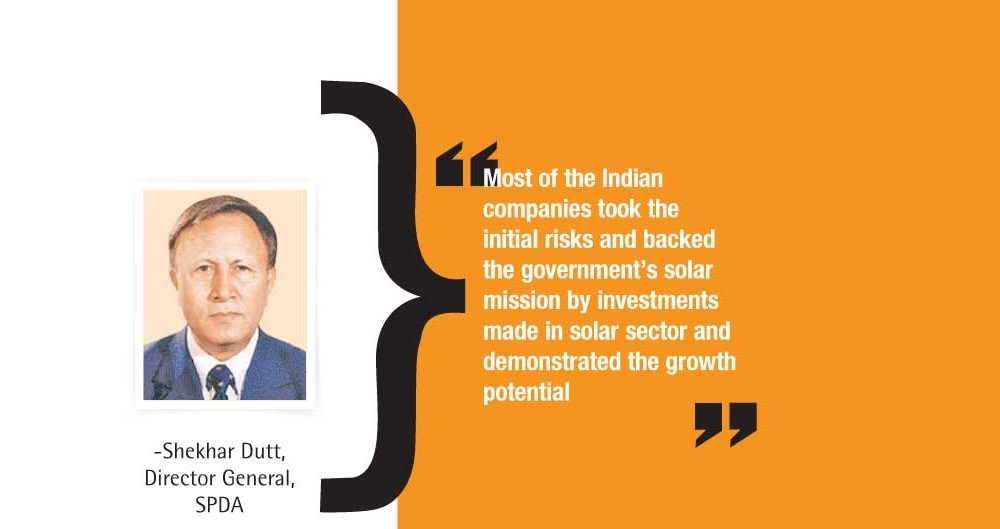“GST will push up solar power projects costs”
By EPR Magazine Editorial June 12, 2017 3:17 pm IST
By EPR Magazine Editorial June 12, 2017 3:17 pm IST

Most of the Indian companies took the initial risks and backed the government’s solar mission by investments made in solar sector and demonstrated the growth potential
-Shekhar Dutt, Director General, SPDA
Indian solar power sector has seen enormous growth during the past few years. Shekhar Dutt, Director General, Solar Power Developers Association (SPDA) gives an overview of the current solar power market in India. He also talks about the probable impacts of GST on solar power projects.
What is your assessment of the current solar power market in India?
The national target of 100 GW solar by 2022 and further plan of taking it up to 250 GW as part of Government of India’s commitment to have 40 per cent generation from renewable energy sources by 2030 (In COP21) has made India a hub of solar market in the world. Sector has seen enormous growth by reaching 10 GW operational in last 3-4 years and approximately similar capacity is under execution to be commissioned during this year. It is an interesting fact that, most of the Indian companies took the initial risks and backed the government’s solar mission by investments made in solar sector and demonstrated the growth potential. As a result, the market is now seeing great interest from investors and utilities from various parts of the world entering to solar market in India. Post allocation of 17-18 GW projects until last year, currently the market is facing inconsistency to maintain the similar pace of allocation and if this gap continues long, it may affect the investor’s interest and ultimately the target of 100 GW. Based on our member’s feedback, SPDA has also raised this concern with Ministry at various forums.
Solar tariff has become highly competitive. Wouldn’t such low tariffs impact on solar power producers ‘profitability?
Do you expect that the tariff can fall further?Can competitive pricing be a major hurdle in achieving 100 GW solar target?
There has to be an integrated focus in terms of generating regular demands from states, maintaining the consistent pipeline for investors to plan better, protecting the investments from payment risks and resolving the challenges like curtailment for solar power generation, which would be required to achieve 100 GW mission successfully. It will be a challenge to maintain the balance between low cost and better performance in terms of quality to run these plants for next 25 years. However, if the focus remains just on competitive pricing and not the overall aspects of the sustainable implementation, that may not give the optimal support to the mission in
long run.
We use cookies to personalize your experience. By continuing to visit this website you agree to our Terms & Conditions, Privacy Policy and Cookie Policy.